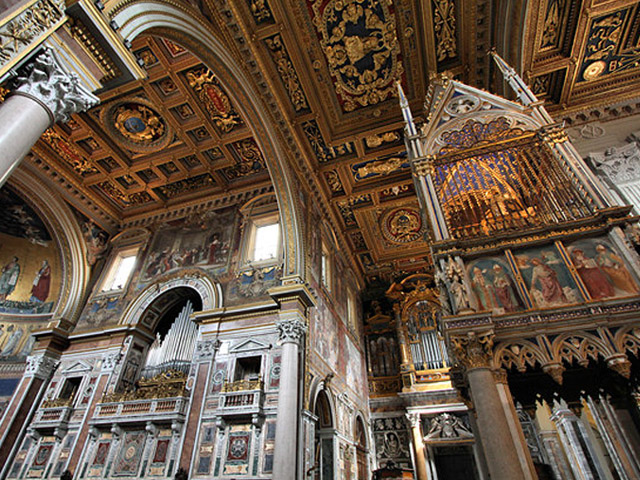
S. Giovanni in Laterano: La Chiesa più Antica del Mondo e Casa del Papa
S. Giovanni in Laterano: The Oldest Church in the World and home to the Pope
S. Giovanni in Laterano: Tra Storia, Arte e Curiosità
St. John Lateran: Where History, Art, and Stories Meet
Oggi ti porto in un piccolo tour della chiesa di S. Giovanni in Laterano a Roma. Lo sapevi che questa chiesa è la sede ecclesiastica ufficiale del Vescovo di Roma, ovvero il Papa? In realtà, è la chiesa più antica del mondo! Come cattedrale del Vescovo di Roma, ha un rango superiore a tutte le altre chiese della Chiesa Cattolica, inclusa la Basilica di San Pietro. È ufficialmente conosciuta come la “Madre di tutte le Chiese”… Non sto scherzando! In latino è chiamata “Omnium ecclesiarum mater”.
Today, I’m taking you on a little tour of St. John Lateran in Rome. Did you know this church is the official ecclesiastical seat of the Bishop of Rome – the Pope? It’s actually the oldest church in the world! As the cathedral of the Bishop of Rome, it ranks above all other churches in the Catholic Church, including St. Peter’s Basilica. It is officially known as the “Mother of All Churches”… I kid you not! In Latin, it’s called “Omnium ecclesiarum mater.”
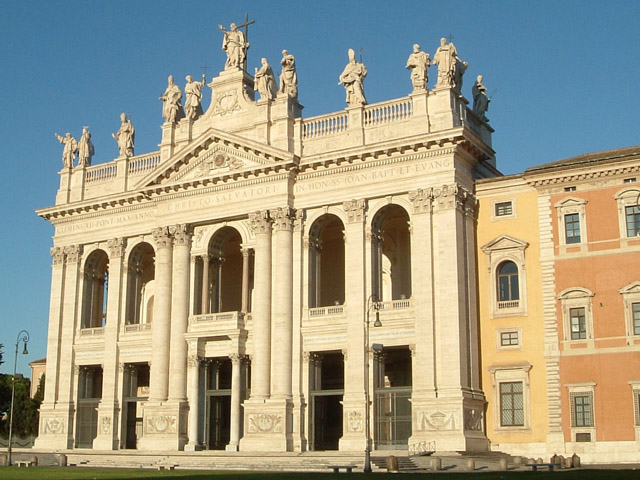
Un capolavoro storico e artistico
A historical and artistic masterpiece
Visitare S. Giovanni in Laterano è davvero un’esperienza straordinaria. La chiesa è immensa e, dal pavimento al soffitto, è ornata con marmi pregiati, statue, soffitti dorati e intricati intarsi. Ogni angolo racconta una storia, custodendo secoli di memoria che risalgono persino a prima del cristianesimo. Nel corso del tempo, artisti, architetti, imperatori e Papi hanno contribuito a modellare e trasformare l’interno e l’esterno di questa struttura unica.
Visiting St. John Lateran is truly an awesome experience. The church is immense and, from floor to ceiling, it is adorned with exquisite marble, statues, gilded ceilings, and intricate carvings. Every corner tells a story, holding centuries of history dating back even to the pre-Christian era. Over the years, artists, architects, emperors, and Popes have contributed to shaping and transforming the interior and exterior of this unique structure.
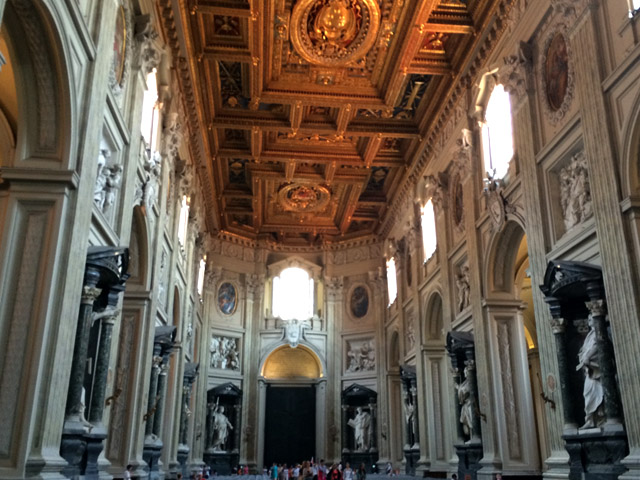
Le Origini: Dai Romani ai Cristiani
The Origins: From Romans to Christians
La basilica originale di S. Giovanni in Laterano si erge su una fortezza di cavalleria imperiale romana, istituita da Settimio Severo nel 193 d.C. Dopo la vittoria di Costantino I su Massenzio, il sito divenne un palazzo della famiglia Laterani. Successivamente, l’imperatore Costantino trasformò il palazzo nella prima chiesa cristiana, che divenne residenza di Papa San Silvestro e la prima sede dei Papi cristiani.
The original basilica of St. John Lateran stands over a Roman imperial cavalry fort established by Septimius Severus in AD 193. After Constantine I defeated Maxentius, the site became a palace for the Laterani family. Later, Emperor Constantine transformed the palace into the first Christian church, which became the residence of Pope St. Sylvester and first seat of the Christian Popes.
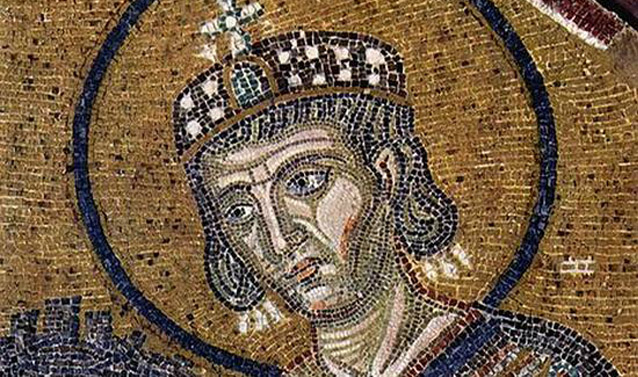
Danni e Rinascite
Destruction and Rebirth
La basilica originale di S. Giovanni in Laterano si erge su una fortezza di cavalleria imperiale romana, istituita da Settimio Severo nel 193 d.C. Dopo la vittoria di Costantino I su Massenzio, il sito divenne un palazzo della famiglia Laterani. Successivamente, l’imperatore Costantino trasformò il palazzo nella prima chiesa cristiana, che divenne residenza di Papa San Silvestro e la prima sede dei Papi cristiani.
The original basilica of St. John Lateran stands over a Roman imperial cavalry fort established by Septimius Severus in AD 193. After Constantine I defeated Maxentius, the site became a palace for the Laterani family. Later, Emperor Constantine transformed the palace into the first Christian church, which became the residence of Pope St. Sylvester and the first seat of the Christian Popes.
Rinnovamenti Artistici
Artistic Renovations
Nel corso del tempo, S. Giovanni in Laterano è stata più volte restaurata e abbellita. Giotto dipinse un affresco per la chiesa, di cui oggi resta solo un frammento. Nel XVI secolo, per celebrare il Giubileo Romano, il restauro di Borromini diede alla basilica il suo aspetto barocco attuale. Tra gli elementi originali conservati, spiccano il soffitto dorato e il pavimento cosmatesco.
Over the years, St. John Lateran has been repeatedly restored and embellished. Giotto painted a fresco for the church, of which only a fragment remains today. In the 16th century, Borromini’s restoration for the Roman Jubilee gave the basilica its current Baroque appearance. Among the original elements preserved are the gilded ceiling and the Cosmatesque floor.

La mia connessione personale con la basilica
My personal connection to the basilica
Durante un recente soggiorno a Roma, ho vissuto proprio dietro l’angolo di questa chiesa e mi sono molto affezionata a S. Giovanni in Laterano. La visitavo spesso e ogni giorno ci passavo davanti per andare a scuola in autobus. Una volta, il primo giorno a Roma, ho avuto un episodio divertente. Ero entrata nella basilica per sfuggire al caldo estivo, mi ero seduta nel transetto principale per scattare delle foto e avevo tirato su la mia lunga gonna fino al ginocchio per rinfrescarmi. Un’anziana guardia mi si avvicinò. Pensavo mi rimproverasse per le foto, ma invece mi chiese gentilmente di abbassare la gonna per essere più “composta”!
During a recent stay in Rome, I lived just around the corner from this church and became quite fond of St. John Lateran. I visited it frequently and passed it daily on my bus ride to school. Once, on my first day in Rome, I had a funny experience. I stepped into the basilica to escape the summer heat, sat down in the main transept to take pictures, and pulled my long skirt up to my knees to cool off. An elderly guard approached me. I thought he would scold me for taking photos, but instead, he politely asked me to pull my skirt down to be more “ladylike!”
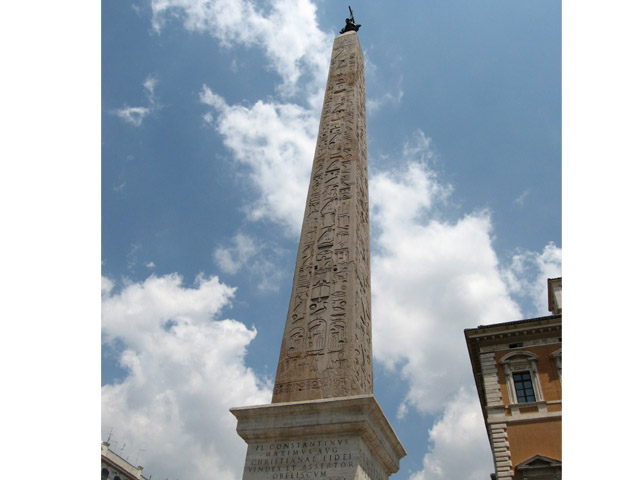
Un Gigante Egizio a Roma
An Egyptian Giant in Rome
Nella piazza di fronte al Palazzo Lateranense si erge uno degli obelischi più grandi del mondo, conosciuto come l’Obelisco Lateranense. Pesa circa 455 tonnellate ed è stato commissionato dal faraone egizio Thutmose III, che lo fece collocare davanti al tempio di Tebe in Egitto. L’imperatore Costantino I desiderava trasferirlo a Costantinopoli, ma alla sua morte fu suo figlio, l’imperatore Costantino II, a inviarlo accidentalmente a Roma, dove fu eretto nel Circo Massimo nel 357 d.C.
In the square in front of the Lateran Palace stands one of the largest obelisks in the world, known as the Lateran Obelisk. It weighs an estimated 455 tons and was commissioned by the Egyptian Pharaoh Thutmose III, who placed it in front of the temple of Thebes in Egypt. Emperor Constantine I intended to ship it to Constantinople, but after his death, his son, Emperor Constantine II, accidentally sent it to Rome, where it was erected in Circus Maximus in AD 357.
Dalla Caduta alla Rinascita
From Collapse to Revival
L’obelisco rimase al Circo Massimo fino a quando un terremoto lo fece crollare in una data non specificata. Nel 1587, Papa Sisto V, venuto a conoscenza della sua esistenza documentata, ordinò di cercarlo. Fu ritrovato a sette metri di profondità sotto i giardini che ormai ricoprivano il Circo, spezzato in tre pezzi. Il papa fece restaurare l’obelisco e il 3 agosto 1588 fu innalzato nella sua posizione attuale.
The obelisk stood in the Circus Maximus until an earthquake toppled it on an unknown date. In 1587, Pope Sixtus V, learning of its documented existence, ordered its recovery. It was found seven meters below the surface of the gardens that had overtaken the Circus, broken into three pieces. The pope had the obelisk restored and re-erected in its current location on August 3, 1588.
La Matta Parla di S. Giovanni in Laterano
La prossima volta che ti trovi a Roma, fai una passeggiata intorno all’esterno di S. Giovanni in Laterano per ammirare l’imponente obelisco, poi entra e lasciati travolgere dall’arte e dalla storia che pervadono questo straordinario luogo. È un’esperienza che vale ogni minuto! E, mi raccomando, aggiusta la gonna prima di entrare… non si sa mai chi ti sta guardando!
The next time you’re in Rome, take a stroll around the exterior of St. John Lateran to admire the towering obelisk, then step inside and immerse yourself in the art and history that fill this extraordinary space. It’s absolutely worth it! And don’t forget to adjust your skirt before you go in… you never know who’s watching!











bellisima chiesa di S. Giovanni, proxima volta a Roma trovero un giorno per visitare la basilica…..
Molto Bella e piena di storia..
raisa prata
Un posto belissimo Melissa. Ci sono stato due anni fa con alcuni colleghi.
They also hold wonderful concerts/recitals here throughout the year here….
Also, very near are the Scala Sancta, the stairs allegedly leading up to the praetorian of Pontius Pilate in Jerusalem. Brought to Rome in the 4th Century.
Ciao Dennis! Hai ragione! Just across the street from S. Giovanni in Laterano is the Scala Sancta. Did you visit this monument?